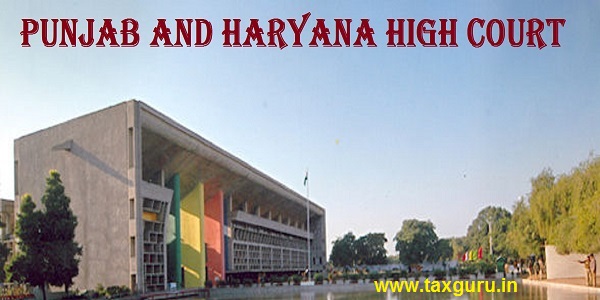Manshaa Nagpaal & Kanumuri Sai Pavani
Abstract
Section 74 of the Indian Contract Act of 1872 pans out the concept of liquidated damages. Courts have interpreted this section in several ways. The simple yet succinct section talks about the requirement to prove a real loss to seek liquidated damages as reasonable compensation under Section 74. However, such an uncomplicated provision turns into an enigma in its application. In this submission, we critically analyze the enigma with contemporary developments. One of the oldest Section 74 references is by the Court decisions of Fateh Chand v. Balkishan Das[1] (Fateh Chand) and Maula Bux v. Union of India,[2] (Maula Bux) which later stem its roots in in Kailash Nath Associates v. DDA[3] (Kailash Nath). ONGC v. Saw Pipes[4] (ONGC) is sandwiched between the Fateh Chand and Kailash Nath cases. Finally, it will conclude with a holistic viewpoint of the section’s applicability that a party must justify its loss to avail the reasonable compensation transcending from Fateh Chand, Maula Bux, and Kailash Nath cannot be applied generally.
Keywords – Liquidated Damages, Loss, Section 74, Proof, Contract
Factual Matrix Concerning ONGC v. Saw Pipes
The Respondent company (Saw Pipes) through a tender notice offered and accepted to supply casing pipes to the Appellant (ONGC, a Public Sector Undertaking). The main aim of the contract was to supply materials before 14-11-1996. Clause 12 says that failing to supply such materials within the specified time, the Appellant is entitled to recover from the Respondent.[5] Clause 11 (a) mentions that such liquidated damages are not a penalty and an amount from 1% to the ceiling of 10% would be levied for such delay.[6] Clause 11 (e) says that the amount would be recovered from the bill for payment given by Respondent to Appellant.[7] In September/October 1996, due to a strike in Europe, the Italian suppliers of the Respondent were not able to supply the materials on the established date.[8] Respondent asked for an extension of 45 days to deliver the materials from the Appellant. Appellant agreed to the same and notified that the agreed liquidated damages mentioned in clause 11 (e) would be recovered for such a delay.
Appellant as mentioned paid for the delayed materials after deducting US dollars 3,04,970.20 and Rs 15,75,559 as liquidated damages.[9] This deduction was unreasonable for the Respondent. To dispute such unreasonableness, the issue was referred to the Arbitral Tribunal. The Arbitral Tribunal held that the Appellant was required to establish for loss suffered to recover disputed liquidated damages.[10] In the Award by the Tribunal, it held that the Appellant had failed to do so and directed the Appellant to pay damages and interest to the Respondent. The Appellant approached the Supreme Court contending the decision of the Arbitral Tribunal.
Analysis
The Indian contractual interpretation is simple: text after context.[11] First, the interpretation of a statute should look through the text/provisions and then secondly it should apply to a specific context. The ONGC case starts from the context and ends with the textual interpretation, such disorder creates confusion. The disorder muddles with the interpretation of Section 74 in the Indian Contract Act. Thus, there is confusion between different interpretations of the Court and the literal words of the section. Both the Court’s interpretation and literal words of the section are effectively projected on various accounts/intervals in this judgment.
The Banality of Claims Under the Judgment: Ignorance of Indian Contract Law
Before delving into the issues of the Contract Act, there are inconsistencies within the judgment. At the outset, the Tribunal made an error by looking at the maintainability of law through public policy under the Arbitration and Conciliation Act, 1996 and not Section 23 of the Indian Contract Act, 1872 which deals with public policy in a wider term.[12] On top of that error, the tribunal inadequately discussed the application of Section 28 (3) of the Act,[13] that the award should align with the intention of the parties arising from the words of the contract. There is also an error in the fact that the Court overlooked the context of the workers strike all over Europe before the agreed date. The act of force majeure should have been emphasized in a context where the delivery of raw materials would have been impossible. Overlooking such context becomes detrimental to the respondent as it is unjustly enriched at the expense of the appellant.
Secondly, Section 23 of the Indian Contract Act, 1972 would have legitimatized as the appellant is a Public Sector Undertaking.[14] The term public policy should have been necessary for delivering the decision because the Appellant is an entity of the Government, but the Court diverted from such a fact and opted for a restrictive approach in the judgment. Additionally, the blunder of the Court brought the contention of penalty[15] when the respondent only contended the levy of liquidated damages as an unreasonable sum. The nature of the contract was completely overlooked. The Arbitral Tribunal and Supreme Court have not considered the application of Section 55 on Clause 11.[16] Paragraph 3 of Section 55 “If the promisee accepts performance after a specified time, then the promisee shall provide notice to the promisor while granting such extension to claim for compensation.”[17] Here, the appellant (promisee) agreed to extend 45 days for delivery of such raw materials through notice informing the respondent of the attachment of pre-liquidated damages and the respondent agreed to pay the damages. Even though unnoticeable, the implications of not discussing the section add to the failure of the Courts to assess the intention of the parties to bind with the obligations agreed on.
Generally, surrounding circumstances should be assessed to understand the intention of the parties. The contracts specify an amount to be paid by the party who fails to honour the contract. In such a case, the Court must decide if a specific stipulation operates as a penalty or liquidated damages, considering several important criteria such as the parties’ intent, the nature of the transaction in question, the other party’s injury, and so on.[18] The basis of the criteria is the deliberation of the parties formulated in the contract.
The deliberation is embedded with the commercial wisdom of parties and party autonomy to uphold the sanctity of the contract.[19] As per the terms and conditions, the respondent explicitly agreed that the liquidated damages would be recovered from the bill of payment. It was a pre-estimated damages and not a penalty for non-performance of the obligations. Further, the language used in the contract conveys the intent to bind from the obligations arising out of terms and conditions. Such a clause on liquidated damages is within their wisdom and autonomy that it is sanctioned by the law of contract to carry forward. The genesis of the contract formation is invalidated by the Courts as they discount the concept of liquidated damages. The overt focus on ‘penalty’ blurs the distinction between liquidated damages and penalty which has essentially diluted the concept of party autonomy.
Confusion of Liquidated Damages and Penalty: A Deliberate Attempt by Judiciary?
Before delving into the farrago of liquidated damages and penalties under Section 74, the text of the provision becomes important. The plain reading of the section explains that if a sum is mentioned in the contract as the amount payable on breach even though such mention is a penalty or not, the party who suffered from the breach has a right to receive “reasonable compensation” not exceeding the amount so mentioned in the contract.[20] The section presumes that the Court should stick to this rule and not order damages beyond the sum mentioned in the contract[21] as it promotes certainty in the event of a breach. The certainty flows into the principle of the aggrieved party to be compensated and restored to the position if the contractual purpose was completed.[22]
The principle and interpretation become murky from Fateh Chand (cited in the ONGC case). The Court affirmed that Section 74 is seen through two measures of damages (1) the Contract mentions the sum to be paid at the time of the breach (2) the Contract mentions any other ways of penalty.[23] Here, the sum to be paid at the time of breach is either inferred as liquidated damages or penalty. There is visible confusion about the interpretation of Section 74 by the judiciary and its legislative intent. The section appears as a general principle to assess the true pre-estimate of damages (irrespective of it constituting a penalty), the Court must award the amount agreed upon by the parties not exceeding the said damages. Unlike the English law position of distinguishing between liquidated damages and penalty, these classifications are seen by the Court as an attempt to eliminate the “elaborate refinements.”[24] The Court is in denial of its actuality in re-establishing the English law’s stern division of penalty and liquidated damages in the Indian scenario. At the pretext of eliminating the distinction, Fateh Chand brings back the English position of dichotomy between liquidated damages and penalty.[25] The role of the Court through this case has been accentuated to assess damage and award reasonable compensation in cases of penalty.
That same reality is projected in Maula Bux as the obscurity creeps from Fateh Chand. The Court proclaimed that if the Court is unable to assess reasonable compensation the sum named by the parties if it is regarded as a genuine pre-estimate will be assessed instead.[26] The primary emphasis of this case is the omission of the “proving a loss in case of breach” requirement under Section 74. However, there is a subtle vacuum in this statement. It formalizes the Court’s thinking of what constitutes reasonable compensation instead of the party’s determination actualized in the contract. On the flip side, the Court also held that if a loss can be determined, then the party claiming compensation must prove such a loss.[27] The “proving the loss” never loses its way and ends up coming back to Section 74. The literal interpretation of the section ends up diluting further.
ONGC in this regard takes a progressive approach towards maintaining the literal interpretation of Section 74. The Arbitral Tribunal and Bombay High Court confirmed that the Appellant was not entitled to the contract sum as it failed to prove the loss according to Fateh Chand and Maula Bux.[28] The Supreme Court of India overturned the ruling by both and affirmed that the appellant was entitled to the stipulated sum even in the absence of proving loss. The Court disregarded such a mandate by affirming that it was ‘liquidated damages,’ a contractual condition declaring a legitimate pre-estimate of damage.[29] This gives the parties a benefit as they were aware of a specific loss that was expected to occur as a result of a breach of the contract at the time the contract was made. However, the Court opined that Section 73 should be read with Section 74.[30] Section 73 is applicable after the breach of contract to determine damages.[31] In such cases, the party that incurred damage does not need to demonstrate that they suffered loss or damage. The consideration is assumed to be different when the compensation specified in the contract is a penalty,[32] thus resorting to Section 73. In contrast, Section 74 allows parties to mention a pre-estimate (which should be reasonable) damages at the stage of contract formation.[33] The Court committed a grave error by combining the interpretations of both the sections which are fundamentally different. Such a connection defeats the pre-ascertainment of damages within the contract.
The emphasis of the Court in Section 74 should be on liquidated damages rather than assessing actual proof behind such damages. However, if the compensation mentioned in the contract for breach is a genuine pre-estimate of the loss that the parties agreed on,[34] then Section 74 should apply. The party who incurred the loss is not required to prove the loss suffered by them or asses the nature of damages.[35] This argument is realized in M/s Phoenix Yule Ltd. v. Neyveli Lignite Corporation Limited.[36] The Court in this case cites ONGC judgment stating that Section 73 and 74 is invoked when the terms of the contract are vague, and the unreasonable estimate (liquidated damages in this context). Until Saw Pipes, the section’s emphasis was on adequate compensation. Compensation was reasonable if granted under established legal norms assumed by the Court. The established legal norms exercised by the Court under its unqualified jurisdiction are restricted to the limit mentioned by the contractual parties.
After ONGC: A Good Law By Kailash Nath?
There is another spinner to ONGC, which is Kailash Nath. When determining the proof of damages for the losses ensued under Section 74, the Court interpreted the phrase “whether or not actual loss is proved to have been caused thereby” to mean that proof of actual damage was not waived by claiming compensation.[37] The Court further observed that “compensation can only be given for damage or loss suffered.” If damage or loss is not suffered, the law does not provide any compensation.[38] The implication of such interpretation is inferred from Nariman J.’s observation that the requirement of loss or harm, which is a “sine qua non for Section 74’s applicability,” does not extend to cases of liquidated damages.[39] Inherently, the Court presumes any stipulations in the contract as a penalty unless it needs to be proved. Another underlying explanation is that the liquidated sum or penalty is the highest limit in both circumstances above which the Court cannot give compensation.[40] Thus the scope of compensation to be awarded by the Court is wide. The value fixed by the parties should be assessed to see if it is reasonable compensation or not. The quagmire through this case is re-stating that the party needs to prove damages to avail the compensation that the Court deems fit. This case comes to the initial point of proving damages to receive compensation. Outside the framework of these judicial precedents, if section 74 is not invoked in the case of liquidated damages in the event of breach, then the application of liquidated damages is not possible.[41] And if penalties are expected to follow in case Section 74, it goes against the essence of the liquidated damages penalty dichotomy in the provision and essentially the agreement. It has unconsciously accepted the pre-Cavendish character of the English Law[42] to distinguish liquidated damages from penalty in Section 74.
Shivprasad Swaminathan analyzes such acceptance and explains another form called “liquidated amount.” The liquidated amount is different from liquidated damages and penalties as enunciated under Section 74. Rather liquidated amount appears to be redundant, as it is absorbed within the penalty category.[43] The Court in the above cases plays around with these two terms and generates ambiguity. Intrinsically, the Court is unwilling to deal with liquidated damages as mentioned under Section 74. Initially suggested in Maula Bux, ONGC and then Kailash Nath, the liquidated damages clause is accepted if it is a real/genuine pre-estimate of loss, and it should be ‘difficult or impossible’ to prove damages.[44] Visibly, if the Court affirms that even though liquidated damages which was agreed by the parties as a true pre-estimate of damages is a penalty and not liquidated damages then it essentially dilutes the purpose of Section 74 in the first place.
Conclusion
The ONGC case is in itself a mystery in terms of the deliberate neglect of the Court to avoid the application of the Indian Contract Act, of 1872. The underlying facts, purpose of the contract and functionality of the parties in a specific context are ignored. The failure of Sections 23 and 55 of the Indian Contract Act, of 1872 applicability, the possibility of force majeure and the appellant being a PSU testifies to such ignorance. The Court is immersed in Section 74’s application and attaches legal norms to it and also confuses with Section 73. Until Kailash Nath, the rule and law established in Fateh Chand and Maula Bux affirm that a party must prove its loss. Such a rule cannot be applied generically. Bereft from the facts of the case or the nature of the contract at issue, the general rule would be contrary to the pre-estimate of liquidated damage which is one of the fundamental clauses agreed by the parties. Questioning the clause would amount to the demeanor of the contractual entitlement. The party autonomy and commercial wisdom of the contract go through judicial upheaval. It can be categorically seen in the judgements of Fateh Chand, Maula Bux, and Kailash Nath that the Court is determined to attach proof of loss in Section 74’s applicability. However, in the ONGC case, the Court ruled that proving loss was not necessary. The conclusions of Fateh Chand, Maula Bux, and Kailash Nath should not be confused with those in the ONGC judgment. Therefore, it would not be an apt conclusion to say that the good law of ONGC has been modified in Kailash Nath. Section 74 is a paradox, there is no fixed rule to ascertain liquidated damages. It entangles with the requirement of proof of loss, and reasonable compensation ascertained by the Court through the intention of the parties. As discussed above, Section 74 has always remained subservient to judicial interpretations.
[1] Fateh Chand v. Balkishan Das 1963 AIR 1405.
[2] Maula Bux v. Union of India 1970 AIR 1955.
[3] Kailash Nath Associates v Delhi Development Authority (2015) 4 SCC 136.
[4] Oil and Natural Gas Corporation Limited v. Saw Pipes Limited (2003) 5 SCC 705.
[5] Ibid, 731.
[6] Ibid, 730.
[7] Ibid.
[8] Ibid, 728.
[9] Ibid.
[10] Ibid, 729.
[11] Mark Beeley, ‘A Rose by Any Other Name? A Comparative Examination of the English and Indian Approaches to Contractual Interpretation’ (2005) 6 (1) Business Law International 130, 138 < https://heinonline.org/HOL/Page?collection=journals&handle=hein.journals/blawintnl2005&id=134&men_tab=srchresults> accessed 18 September 2023.
[12] Nadia Gracias and Siddhima Kotak, ‘The Saw Pipes Judgement’ (2005) 4 Law Review, Government Law College 106, 130 <https://heinonline.org/HOL/Page?collection=journals&handle=hein.journals/lrgvtlc4&id=119&men_tab=srchresults> accessed 17 September 2023.
[13] Oil and Natural Gas Corporation Limited (n 5), 736.
[14] Gracias and Kotak (n 13), 129.
[15] Ibid, 124.
[16] Ibid, 123.
[17] The Indian Contract Act (Act 9 of 1872), s. 55.
[18] Nishith Desai Associates, ‘Law of Damages in India’ May 2022 1, 6 <https://www.nishithdesai.com/fileadmin/user_upload/pdfs/Research_Papers/Law_of_Damages_in_India.pdf> accessed 16 September 2023.
[19] Lavanya Pathak and Pallavi Mishra, ‘Balancing Contractual Autonomy vis-à-vis Application of Section 74 of the Contract Act, 1872: Part II’ (IndiaCorpLaw, 18 July 2023) <https://indiacorplaw.in/2023/07/balancing-contractual-autonomy-vis-a-vis-application-of-section-74-of-the-contract-act-1872-part-ii.html> accessed 15 September 2023.
[20] Rajesh Kapoor, Avatar Singh’s Contract and Specific Relief (13th edn, EBC 2022), 534.
[21] Ibid.
[22] Shubhra Wadhawan, ‘Revisiting Liquidated Damages in India’ (SCC Online, 30 January 2018) <https://www.scconline.com/blog/post/2018/01/30/revisiting-liquidated-damages-india/> accessed 16 September 2023.
[23] Fateh Chand (n 2), 142.
[24] Ibid.
[25] Shivprasad Swaminathan, ‘De-inventing the Wheel: Liquidated Damages, Penalties and the Indian Contract Act, 1872’ (2018) 6 (1) The Chinese Journal of Comparative Law 103, 112 < https://academic.oup.com/cjcl/article-abstract/6/1/103/4994994> accessed 15 September 2023.
[26] Jeevan Ballav Panda and Satish Padhi, ‘Liquidated Damages Saga: What does Fateh Chand, Maula Bux and Saw Pipes lead to?’ (Bar and Bench, 20 December 2018) < https://www.barandbench.com/columns/liquidated-damages-fateh-chand-maula-bux-saw-pipes> accessed 18 September 2023.
[27] Ibid.
[28] Swaminathan (n 26), 111.
[29] Ibid, 110.
[30] Oil and Natural Gas Corporation Limited v. Saw Pipes Limited (n 5), 742.
[31] The Indian Contract Act (Act 9 of 1872), s. 73.
[32] Swaminathan (n 26) 110.
[33] Lovely Dasgupta, ‘Legitimate Interest Test and Party Autonomy: Correcting the Discourse on Liquidated Damages within the Indian Contract Act 1872’ (2022) 13 (1) 101, 110 <https://heinonline.org/HOL/Page?collection=journals&handle=hein.journals/ijlj13&id=111&men_tab=srchresults> accessed 17 September 2023.
[34] Ibid, 114.
[35] Ibid.
[36] Pathak and Mishra (n 20).
[37] Dasgupta (n 34), 108.
[38] Wadhawan (n 23).
[39] Swaminathan (n 26), 115.
[40] Swaminathan (n 26), 126.
[41] Ibid, 104.
[42] Pathak and Mishra (n 20).
[43] Swaminathan (n 26), 116.
[44] Ibid.
***
Author Details:
| Author 1 | Author 2 | |
|---|---|---|
| Full Name | Manshaa Nagpaal | Kanumuri Sai Pavani |
| manshaanagpaal@gmail.com | 23jgls-kanumuri@jgu.edu.in | |
| Phone | 9812227723 | [Not Provided] |
| Affiliation | Student at Jindal Global Law School | Student at Jindal Global Law School |




























